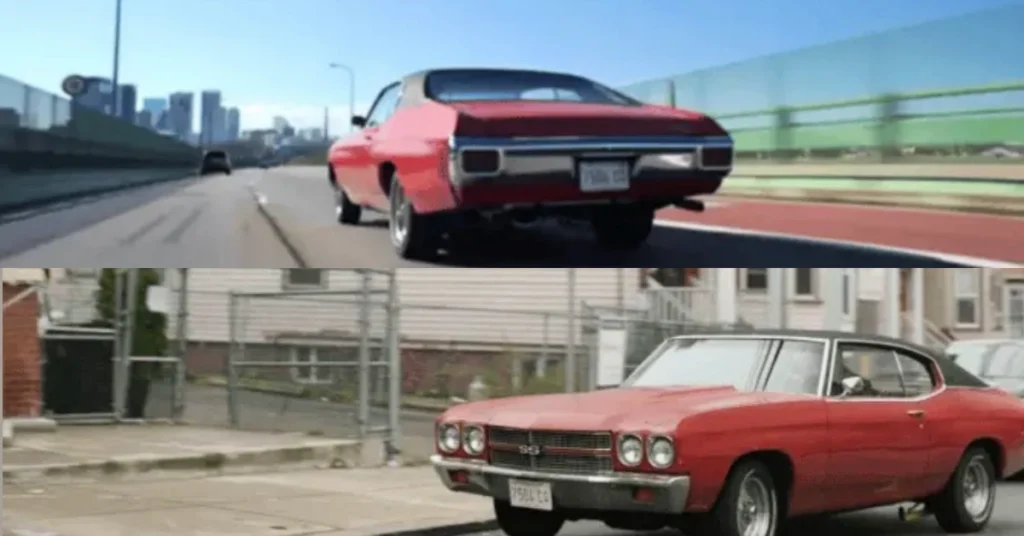In the realm of Hollywood, where cars often play supporting roles, few vehicles have captured the spotlight quite like the 1970 Dodge Challenger featured in Liam Neeson’s 2012 film The Grey. This classic American muscle car, with its raw power and timeless design, became more than just a prop—it was a character in its own right, embodying the rugged spirit of the film’s narrative. This article explores the history of the 1970 Dodge Challenger, its role in The Grey, its design and performance, and its enduring legacy as a cinematic and automotive icon.
Table of Contents
The 1970 Dodge Challenger: A Muscle Car Legend
Origins in the Muscle Car Era
The Dodge Challenger debuted in 1970, entering the American muscle car scene at the height of its glory. Developed by Chrysler’s Dodge division, the Challenger was designed to compete with heavyweights like the Ford Mustang, Chevrolet Camaro, and Pontiac GTO. Built on the Chrysler E-body platform, it shared underpinnings with the Plymouth Barracuda but boasted a distinct identity with its aggressive styling and versatile performance options.
The 1970 model year was particularly significant, as it marked the Challenger’s introduction during a time when American automakers were pushing the boundaries of power and design. Available in a range of trims, from the base model to the high-performance R/T (Road/Track), the Challenger offered something for every enthusiast, cementing its place in automotive history.
A Star in Hollywood
The 1970 Dodge Challenger’s cinematic legacy began long before The Grey. Its most famous appearance was in the 1971 film Vanishing Point, where a white Challenger R/T became an enduring symbol of rebellion and freedom. This iconic role set the stage for the car’s later appearances, including its memorable turn in The Grey, where it complemented Liam Neeson’s portrayal of a hardened survivor.
The Role of the Challenger in ‘The Grey’
Setting the Scene
The Grey, directed by Joe Carnahan, is a gritty survival thriller that follows a group of oil workers, led by Neeson’s character John Ottway, as they battle the Alaskan wilderness and a pack of wolves after a plane crash. The 1970 Dodge Challenger appears in a flashback scene, providing a glimpse into Ottway’s past and adding emotional depth to his character.
In the film, the Challenger is depicted as Ottway’s personal vehicle, a rugged and powerful machine that reflects his tough, no-nonsense persona. The car’s brief but impactful appearance, set against the stark contrast of the film’s snowy landscapes, makes it a standout moment, resonating with audiences and car enthusiasts alike.
Symbolic Significance
The Challenger’s presence in The Grey is more than just aesthetic. Its robust design and muscular stance symbolize_products like the 1970 Dodge Challenger symbolize resilience and strength, mirroring Ottway’s struggle for survival. The car’s classic status also evokes nostalgia, connecting viewers to a bygone era of American automotive prowess, much like Ottway’s memories of a simpler time.
Design and Features of the 1970 Dodge Challenger
Iconic Styling
The 1970 Dodge Challenger was a masterpiece of design, blending aggression and elegance. Its long hood, wide stance, and low profile gave it a predatory look, while details like the split grille, hidden headlights (on some models), and chrome trim added sophistication. The car was offered as a hardtop coupe or convertible, with vibrant color options like Plum Crazy Purple, Sublime Green, and HEMI Orange that became synonymous with the era.
The interior was equally striking, featuring bucket seats, a center console, and a driver-focused dashboard. High-performance models like the R/T included rallye gauges, a woodgrain steering wheel, and optional features like a pistol-grip shifter for the four-speed manual transmission, enhancing the driving experience.
Engine Options and Performance
The 1970 Dodge Challenger offered a range of engines to suit different driving styles:
- Six-cylinder and small-block V8s: The base models came with a 225-cubic-inch Slant Six or V8s like the 318 or 340 cubic-inch, ideal for everyday driving.
- Big-block V8s: Performance models, including the R/T, offered engines like the 383, 440, and the legendary 426 HEMI, producing up to 425 horsepower.
- The Grey’s Challenger: While the exact specifications of the car in The Grey aren’t detailed, its R/T badging and visual cues suggest a high-performance model, likely equipped with a big-block V8, given its throaty exhaust note and commanding presence.
The Challenger’s performance was formidable, with top models achieving 0-60 mph in under 6 seconds and quarter-mile times in the low 14-second range. Its heavy-duty suspension and optional power steering and disc brakes provided decent handling for a car of its size, though its true strength lay in straight-line speed.
1990s Geo Metro: The Forgotten Champion of Fuel Efficiency in American Automotive History
The 1970 Pontiac GTO Judge Ram Air IV: The Rarest and Most Exclusive Muscle Car of the 1970s
Performance and Driving Experience
Power on the Road
Driving a 1970 Dodge Challenger was an visceral experience. The big-block V8s delivered relentless acceleration, accompanied by a signature rumble that turned heads. The four-speed manual transmission, with its precise shifts, allowed drivers to fully engage with the car’s power, while the automatic option offered smoother cruising. On the open road, the Challenger was a beast, though its weight and size made it less agile in tight corners compared to smaller pony cars.
Reliability and Maintenance
The Challenger was built to last, with robust engines and a sturdy chassis. However, its complex components, like the HEMI engine, required regular maintenance to perform at their best. Owners often faced challenges with rust, particularly in regions with harsh winters, and sourcing original parts for rare models can be difficult today. Despite these hurdles, well-maintained Challengers remain reliable, with many still on the road decades later.

Cultural Impact and Legacy
A Cinematic Icon
The 1970 Dodge Challenger’s role in The Grey added to its storied Hollywood resume. Its appearances in films, TV shows, and video games have made it a cultural touchstone, symbolizing power, freedom, and rebellion. The car’s resurgence in the 2008 Dodge Challenger revival, which drew heavily on the 1970 design, further solidified its influence, appealing to a new generation of enthusiasts.
Collectibility and Value
Today, the 1970 Dodge Challenger is a prized collector’s item, with values varying by condition and specification. Base models can fetch $30,000-$50,000, while R/T models with big-block engines, especially the HEMI, can exceed $150,000 at auction. Convertibles and rare color combinations command premium prices, with pristine examples selling for over $500,000. The car’s appearance in The Grey has boosted its appeal among fans of both cinema and classic cars.
The Challenger’s Enduring Appeal
A Bridge Between Past and Present
The 1970 Dodge Challenger remains a bridge between the muscle car era and modern performance vehicles. Its timeless design and raw power continue to inspire automakers and enthusiasts, as seen in the continued production of the modern Challenger. For fans of The Grey, the car is a poignant reminder of Liam Neeson’s powerful performance and the film’s themes of survival and resilience.
Lessons for Today’s Automotive World
The Challenger’s success highlights the enduring appeal of bold design and uncompromised performance. As automakers shift toward electric and hybrid vehicles, the 1970 Challenger serves as a reminder of the emotional connection drivers feel with classic cars, a quality that modern designs strive to recapture.
Conclusion
The 1970 Dodge Challenger in The Grey is more than a cinematic prop—it’s a symbol of an era when American muscle cars ruled the roads and a fitting companion to Liam Neeson’s intense performance. With its stunning design, formidable performance, and rich cultural legacy, the Challenger remains an icon in both automotive and Hollywood history. Whether admired on screen or coveted in a collector’s garage, the 1970 Dodge Challenger continues to steal the show, proving that some classics never fade.

